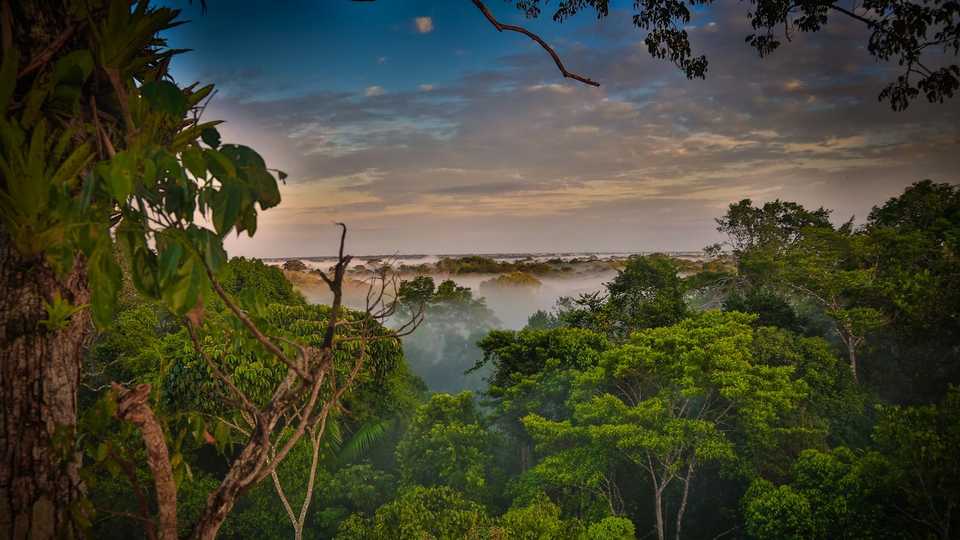The California Academy of Sciences is a leading scientific and cultural institution based in San Francisco. It is home to an aquarium, planetarium, natural history museum, and research and education programs, which engage people of all ages and backgrounds on two of the most important topics of our time: life and its sustainability. Founded in 1853, the Academy¹s mission is to explore, explain, and sustain life. Visit www.calacademy.org for more information.
Summit attendees commit to take action on primary forest destruction, sustainable forest management, and support for forest-dwelling communities worldwide
SAN FRANCISCO (February 6, 2015) – On January 22, 2015, the California Academy of Sciences hosted a Forest Solutions Summit that brought together 167 scientists, students, and educators to address growing concerns about the state of the world’s forests and forest-dwelling communities. Summit participants snacked on sustainably sourced chocolate and cricket flour cookies while formulating a set of actions for individuals and institutions to promote the greatest positive change in global forest conservation. This week, the group committed to testing these suggestions (listed below) in their own lives and institutions, and pledged to share their successes within and beyond the summit network.
“The Academy pledges to not only explore and explain life on Earth, but also to sustain it,” says Dr. Meg Lowman, the Academy's Chief of Science and Sustainability. “By becoming a convening hub for groups of leaders to come together, we can drive positive actions for sustainability outcomes. The Forest Solutions Summit was a perfect way to launch this new initiative beyond the Academy’s walls.”
Throughout the summit, a diverse group of speakers—including Lowman and Academy Executive Director Dr. Jon Foley, among others—presented new discoveries and innovative approaches to ensuring the long-term future of the world’s forests. A consistent theme connecting the day’s presentations and discussions was the need to better understand the roles that forests play in human health, both for indigenous local people and for all people who utilize their ecosystem services. Dr. Justin Brashares, Associate Professor of Wildlife Ecology and Conservation at UC Berkeley, spoke about the need to put a “human face” on the importance of protecting natural resources worldwide. During his presentation, Brashares asked: “Are we doing our job connecting biodiversity to its impact on the lives of humans?”
Summit participants toured the Academy’s lush, four-story rainforest exhibit and provided valuable feedback about how to incorporate summit action items—from celebrating conservation leaders to visually representing forest-dwelling communities—into the exhibit’s design, which houses more than 1,600 live animals. From the bright flashes of blue morpho butterflies to the jewel-like colors of poison-dart frogs, Academy visitors are instantly transported to some of the most biodiverse forests on Earth. This immersive rainforest experience—available in the heart of San Francisco’s Golden Gate Park—is a powerful conservation tool, connecting visitors with beautiful, faraway regions in need of protection.
Aside from rainforest exhibit design feedback, two immediate outcomes of the Summit were the creation of a Bay Area network of forest scientists and a commitment from the Academy to continue highlighting the most pressing forest conservation issues and innovative solutions for solving these problems. By focusing on the importance of tangible forest conservation actions for both individuals and institutions, summit participants are attempting to broaden their impact beyond the scientific community.
“Rainforests keep our planet healthy for all of life on Earth,” says Lowman. “Increasing forest protections cannot wait. The Academy knows this is a critical moment to inspire positive change for the future of forest conservation.”
A brief summary of 2015 Forest Solutions Summit action items are included below.
Individuals
- Pledge to help preserve forests
- Plant trees
- Buy shade-grown coffee
- Buy sustainable timber
- Become an active member of the forest community by joining a forest conservation organization
- Give children opportunities to explore nature in fun, unstructured ways
- Share what you know about trees by mentoring children and young scientists
- Spread the word about forest issues—and don’t be afraid to preach beyond the choir
Institutions (Industry, NGOs, Foundations, and Governments)
- Educate stakeholders
- Raise awareness about the value of forests and their connection to global human and ecological health
- Improve bio-literacy, both among citizens and within the government
- Create opportunities for girls to enter the educational system and become stewards of their own local environments
- Create educational opportunities for people from diverse ethnic and cultural groups
- Develop workshops that empower people to create their own solutions
- Partner with forest-dwelling people to promote sustainable livelihoods in their forests
- Promote solutions
- Collaborate to create new meaningful and sustainable livelihood options for forest-dwelling people
- Promote programs that fund and encourage citizens to plant trees
- Encourage individuals to make a personal zero-deforestation commitment—and show them how
- Promote and fund technological innovations that help preserve forests and forest communities
- Develop new strategies for feeding the world’s people—increase productivity, reduce waste, distribute more effectively
- Celebrate Leaders
- Mentor emerging leaders from forest communities worldwide
- Nominate and promote forest heroes
Press Contacts
If you are a journalist and would like to receive Academy press releases please contact press@calacademy.org.
Digital Assets
Hi-res and low-res image downloads are available for editorial use. Contact us at press@calacademy.org to request access.


